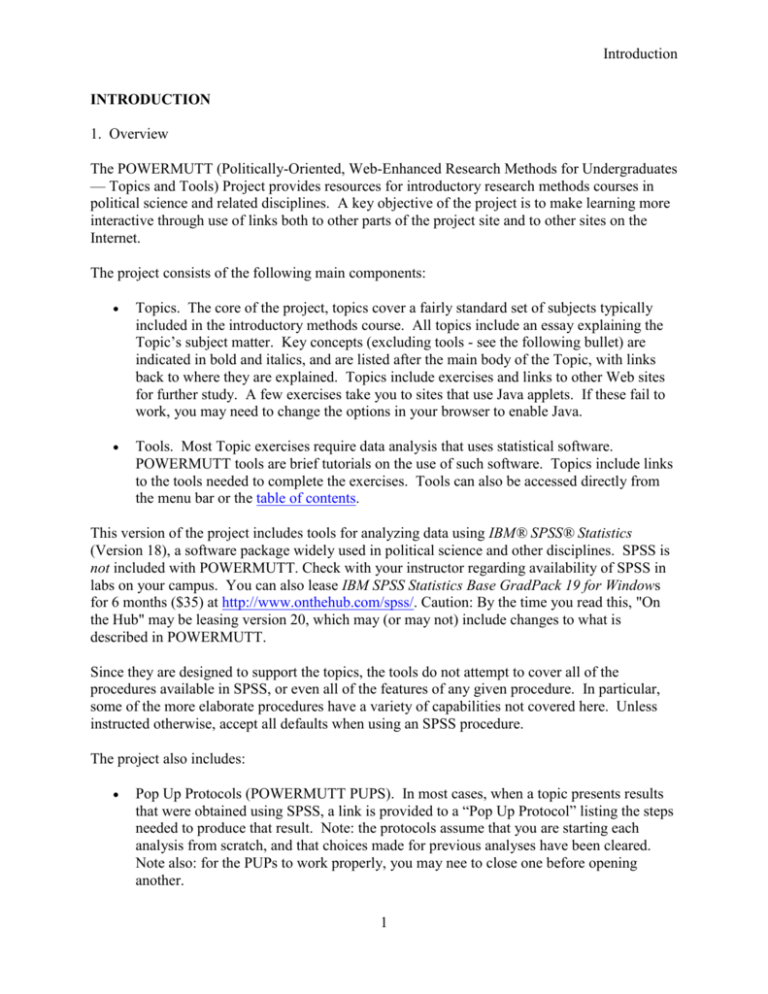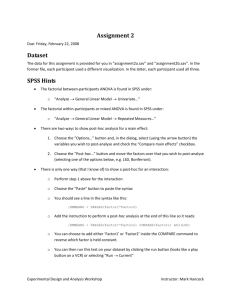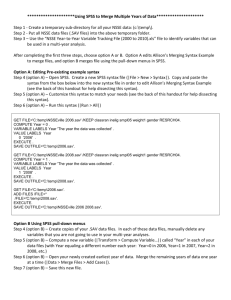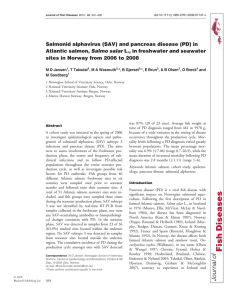introduction
advertisement

Introduction INTRODUCTION 1. Overview The POWERMUTT (Politically-Oriented, Web-Enhanced Research Methods for Undergraduates — Topics and Tools) Project provides resources for introductory research methods courses in political science and related disciplines. A key objective of the project is to make learning more interactive through use of links both to other parts of the project site and to other sites on the Internet. The project consists of the following main components: Topics. The core of the project, topics cover a fairly standard set of subjects typically included in the introductory methods course. All topics include an essay explaining the Topic’s subject matter. Key concepts (excluding tools - see the following bullet) are indicated in bold and italics, and are listed after the main body of the Topic, with links back to where they are explained. Topics include exercises and links to other Web sites for further study. A few exercises take you to sites that use Java applets. If these fail to work, you may need to change the options in your browser to enable Java. Tools. Most Topic exercises require data analysis that uses statistical software. POWERMUTT tools are brief tutorials on the use of such software. Topics include links to the tools needed to complete the exercises. Tools can also be accessed directly from the menu bar or the table of contents. This version of the project includes tools for analyzing data using IBM® SPSS® Statistics (Version 18), a software package widely used in political science and other disciplines. SPSS is not included with POWERMUTT. Check with your instructor regarding availability of SPSS in labs on your campus. You can also lease IBM SPSS Statistics Base GradPack 19 for Windows for 6 months ($35) at http://www.onthehub.com/spss/. Caution: By the time you read this, "On the Hub" may be leasing version 20, which may (or may not) include changes to what is described in POWERMUTT. Since they are designed to support the topics, the tools do not attempt to cover all of the procedures available in SPSS, or even all of the features of any given procedure. In particular, some of the more elaborate procedures have a variety of capabilities not covered here. Unless instructed otherwise, accept all defaults when using an SPSS procedure. The project also includes: Pop Up Protocols (POWERMUTT PUPS). In most cases, when a topic presents results that were obtained using SPSS, a link is provided to a “Pop Up Protocol” listing the steps needed to produce that result. Note: the protocols assume that you are starting each analysis from scratch, and that choices made for previous analyses have been cleared. Note also: for the PUPs to work properly, you may nee to close one before opening another. 1 Introduction Data Downloads. Most of the exercises require analysis of one of several datasets provided with the project. Datasets are in SPSS system file format (".sav" extension). The files can be downloaded by going to the "Downloads" section of the project. The following files are provided: American National Election Study (ANES) 2004 Subset (anes04s.sav). The ANES is a widely used and highly regarded national survey conducted since 1948 by the Center for Political Studies at the University of Michigan. The file provided here is a subset of the survey conducted around the 2004 elections. While most examples using ANES data are from the 2008 study, the 2004 subset has been retained because it contains a few variables useful for our purposes that were not included in 2008. If replicating an example shown in POWERMUTT, or in carrying out an exercise, be sure to use the dataset indicated. If you don't, you will not either succeed at all or (worse, if you are doing a graded assignment) will obtain a somewhat different answer. American National Election Study 2008 Subset (anes08s.sav). American National Election Study 2000-2004 Panel Study Subset (anespanl.sav). In 2002 and 2004, the Center for Political Studies reinterviewed respondents from the 2000 study. Each year, respondents were interviewed before and again after the election, so the panel study includes six "waves" of interviews, providing an unusual opportunity for longitudinal (change over time) analysis. The General Social Survey (GSS) Cumulative (1972-2006) Subset (gsssums.sav). Conducted by the National Opinion Research Center (NORC), the GSS is another very widely used national survey. The subset provided year includes a small number of variables taken from respondents in all GSS surveys through 2006. Not a panel study, but a series of cross-sectional (snapshot) surveys, the cumulative file provides another way to examine change over time. The United States House of Representatives (house.sav). The United States Senate (senate.sav). The American States (states.sav). The Countries of the World (countries.sav). The California Legislature (calsenate.sav and calassembly.sav). None of the examples and exercises in POWERMUTT use these data, but they are provided for additional analysis. Codebooks. Topics include links to codebooks describing the relevant datasets. Codebooks can also be accessed directly. Topic Downloads. Topics are available for hard copy printing in Microsoft® Word (.doc) format. The files can be downloaded by going to the "Downloads" section of the project. If Word is loaded on your computer, you can open the file directly by doubleclicking on it. You can also save it to one of the drives on your computer. Links to Other Resources available on the Internet for teaching and learning research methods. Note: if pop ups don't seem to work, you may need to temporarily disable any pop up blockers installed in your browser. 2 Introduction Within a POWERMUTT Web page (other than the home page and the table of contents), clicking on a link to an address external to the page will open up a new window in your browser. This is done so that you can work simultaneously with the document and with the other material. For example, while working on an exercise, you may need to refer to an SPSS tool and to a dataset codebook. Some of these links will take you to another document within the project, others to various sites on the Internet. Links to another location on the same page will not open a new window in your browser, and you can return to your previous location simply by clicking on your browser’s “Back” button 2. Acknowledgements I would like to express my thanks to my colleague, Dr. Sandra Emerson, for agreeing to “field test” POWERMUTT in her research methods class, and to her students and mine for their many helpful suggestions. The initial development of the project would not have been possible without the support of a sabbatical leave from California State Polytechnic University, Pomona. 3











